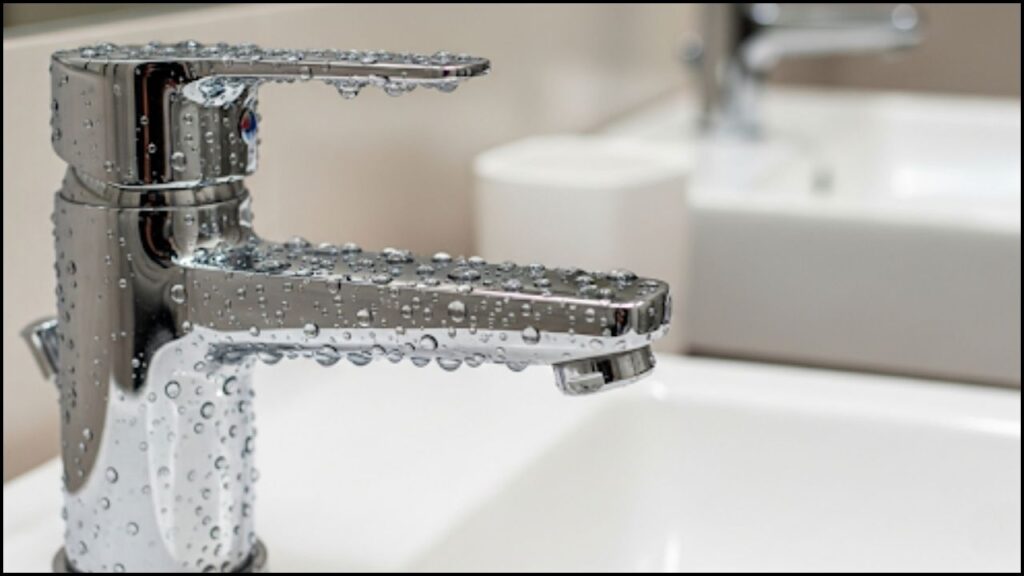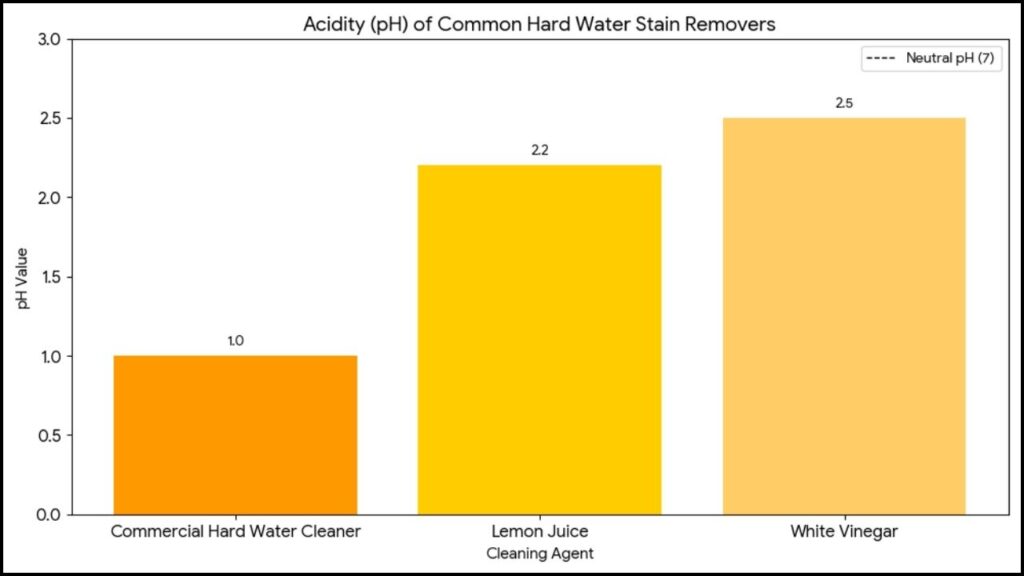Hard water stains, characterized by a chalky, off-white film on faucets, shower doors, and kitchenware, are a persistent nuisance for households across the globe. The phenomenon is not a product of water purity but rather its mineral content, specifically high concentrations of calcium and magnesium. When this water evaporates, it leaves behind these mineral deposits, which can accumulate into a tough, unsightly “scale” over time. Fortunately, experts in chemistry and home maintenance say these deposits can be effectively managed with readily available household products. This report, based on analysis of scientific literature and interviews with cleaning professionals, details five straightforward methods for getting rid of hard water stains using common, safe ingredients.

The Science Behind the Stain
The key to removing hard water stains is understanding their chemical composition. According to sources like the Britannica Encyclopedia and Chemistry LibreTexts, the scale is primarily composed of calcium carbonate (CaCO3) and magnesium hydroxide (Mg(OH)2). These compounds are alkaline, or basic, in nature. This chemical reality is why acidic substances are so effective at dissolving them. The acid reacts with the alkaline mineral deposits, breaking them down into water-soluble salts that can be easily rinsed away.
“The reaction is essentially an acid-base neutralization,” explained Dr. Sarah Reynolds, a chemist specializing in material science. “You are applying an acid, like acetic acid in vinegar, to a basic substance on the surface. The bubbles you see during the cleaning process are carbon dioxide gas being released as the minerals dissolve. It’s a very simple and effective chemical principle.”
Method 1: The Vinegar and Water Solution
The most widely recommended and versatile approach for removing mild to moderate hard water stains is a simple vinegar and water solution. White vinegar’s high concentration of acetic acid makes it a potent de-scaler.
Instructions:
- Create a solution by mixing equal parts white vinegar and water in a spray bottle. For more stubborn stains, undiluted vinegar can be used.
- Apply the solution liberally to the stained surface.
- Allow the solution to sit for at least 15-30 minutes. This soaking period is crucial as it gives the acid time to penetrate and break down the mineral bonds. For severe buildup on fixtures, a rag soaked in vinegar can be wrapped around the item to ensure continuous contact.
- Scrub the area with a stiff-bristled brush, sponge, or microfiber cloth.
- Rinse the surface thoroughly with clean water and dry it with a cloth to prevent new spots from forming.
This method is highly effective on most hard surfaces, including glass shower doors, chrome faucets, and ceramic tiles. However, experts from Martha Stewart Living and other home maintenance sources caution against using vinegar on natural stone surfaces like marble, travertine, or granite, as the acid can etch and damage the finish.
Method 2: The Baking Soda Paste
For stains that require a mild abrasive, a paste made from baking soda is an excellent alternative. Baking soda, or sodium bicarbonate (NaHCO3), is a gentle abrasive that can help lift tough residue without scratching the surface. It can be used alone or in conjunction with vinegar for a more powerful reaction.
Instructions:
- Mix baking soda with a small amount of water to create a thick paste.
- Apply the paste directly to the stained area. For tougher stains, a paste combining baking soda and vinegar can be used, which will bubble and fizz as it reacts.
- Let the paste sit for 10-15 minutes.
- Use an old toothbrush or a non-abrasive sponge to scrub the paste into the stain in a circular motion.
- Rinse and wipe the surface clean.
This method is particularly useful for cleaning tile grout, sinks, and other areas where a paste can adhere to the surface. It is also a safer option for sensitive surfaces where vinegar is not recommended.
Method 3: Lemon Juice
Lemon juice, containing citric acid, offers a milder, more pleasant-smelling alternative to vinegar. Its acidity makes it effective at dissolving mineral deposits.
Instructions:
- For light stains, cut a lemon in half and rub it directly on the affected area.
- For a more controlled application, mix equal parts lemon juice and water in a spray bottle.
- Apply to the surface, let it sit for 5-10 minutes, and then wipe clean with a cloth.
- For small items like showerheads, a plastic bag filled with lemon juice can be tied around the fixture for an hour or more to allow for deep soaking.
Method 4: Hydrogen Peroxide and Cream of Tartar

For particularly stubborn, caked-on deposits, a more potent paste can be made from hydrogen peroxide and cream of tartar. This combination is effective on metal fixtures and porcelain.
Instructions:
- Mix a small amount of hydrogen peroxide and cream of tartar to form a thick paste.
- Apply the mixture to the stain.
- Allow the paste to sit for approximately 30 minutes.
- Scrub the area with a brush or sponge, then rinse thoroughly.
Method 5: Commercial Cleaners and Prevention
When natural remedies are insufficient, commercially available products specifically designed for mineral removal can be used. Many contain stronger acids like phosphoric acid or hydrochloric acid. It is critical to read and follow all manufacturer instructions, as these chemicals can be corrosive and require proper ventilation and protective gear. The Maids, a professional cleaning service, recommends wearing gloves and eye protection when using these products.
Ultimately, the most effective strategy for managing hard water is prevention. According to Frizzlife, a water purification company, regularly wiping down wet surfaces after use is the simplest way to prevent water from evaporating and leaving minerals behind. For a long-term solution, installing a water softener can remove the stain-causing minerals at the source, thereby eliminating the problem entirely.
What to Avoid: Common Mistakes
Experts advise against using overly abrasive tools or cleaners that can scratch surfaces, as this can make future mineral deposits more likely to adhere. Additionally, never mix commercial cleaners, particularly those containing ammonia and bleach, as they can create toxic fumes.
The problem of hard water is widespread and can be a continuous challenge for homeowners. However, with a clear understanding of the underlying science and the application of these practical, expert-backed methods, individuals can maintain clean, stain-free surfaces with confidence.
8 Surprising Uses for the Magic Eraser, According to Cleaning Professionals
